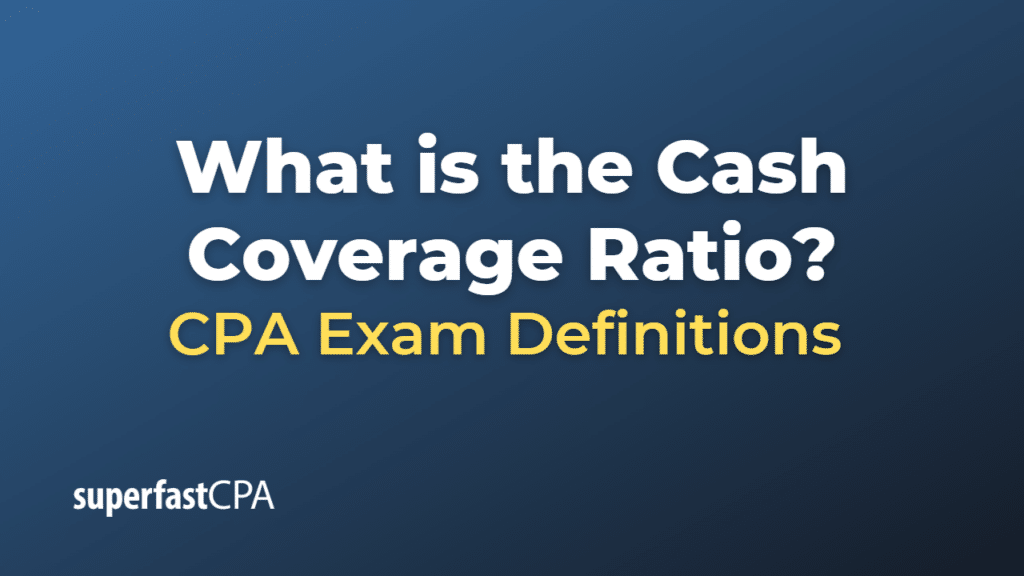Cash Coverage Ratio
The cash coverage ratio is a financial metric that measures a company’s ability to pay its interest expenses using the cash generated from its operating activities, without relying on external financing. It is an important indicator of a company’s liquidity, solvency, and overall financial health.
The cash coverage ratio is calculated using the following formula:
\(\text{Cash Coverage Ratio} = \frac{\text{Earnings Before Interest and Taxes + Depreciation and Amortization}}{\text{Interest Expense}} \)
Where:
- Earnings Before Interest and Taxes (EBIT) represents a company’s operating income, which measures its profitability before considering the impact of interest and taxes.
- Depreciation and Amortization are non-cash expenses that reduce a company’s reported earnings but do not impact its cash flow. Adding these expenses back to EBIT provides a more accurate measure of the cash generated from operating activities.
- Interest Expense represents the cost of borrowing funds, typically through loans or the issuance of bonds.
A higher cash coverage ratio indicates that a company has sufficient cash flow from its operations to cover its interest expenses, reducing the risk of default on its debt obligations. In general, a cash coverage ratio of 1 or higher is considered satisfactory, as it indicates that a company can meet its interest payments without relying on external financing. However, it’s important to consider industry norms and a company’s specific financial situation when evaluating its cash coverage ratio.
Investors and creditors often use the cash coverage ratio to assess a company’s creditworthiness and financial stability, as it provides insight into the company’s ability to manage its debt and meet its financial obligations using its internal resources.
Example of the Cash Coverage Ratio
Let’s consider a hypothetical example of Company Z, which operates in the manufacturing industry. We have the following financial information for Company Z:
- Earnings Before Interest and Taxes (EBIT): $300,000
- Depreciation and Amortization: $50,000
- Interest Expense: $60,000
We can calculate the cash coverage ratio for Company Z using the formula:
\(\text{Cash Coverage Ratio} = \frac{\text{EBIT + Depreciation and Amortization}}{\text{Interest Expense}} \)
\(\text{Cash Coverage Ratio} = \frac{300,000 + 50,000}{60,000} = \frac{350,000}{60,000} = 5.83 \)
In this example, Company Z has a cash coverage ratio of 5.83, which indicates that it has more than enough cash flow from its operating activities to cover its interest expenses. This suggests that Company Z is in a strong financial position to meet its debt obligations without relying on external financing.
It’s important to keep in mind that the cash coverage ratio should be evaluated in the context of the specific industry and company’s financial situation. A ratio of 1 or higher is generally considered satisfactory, but higher ratios may be more favorable in certain industries or for companies with a higher risk profile. In the case of Company Z, the cash coverage ratio of 5.83 suggests strong financial stability and a low risk of default on its debt obligations.













